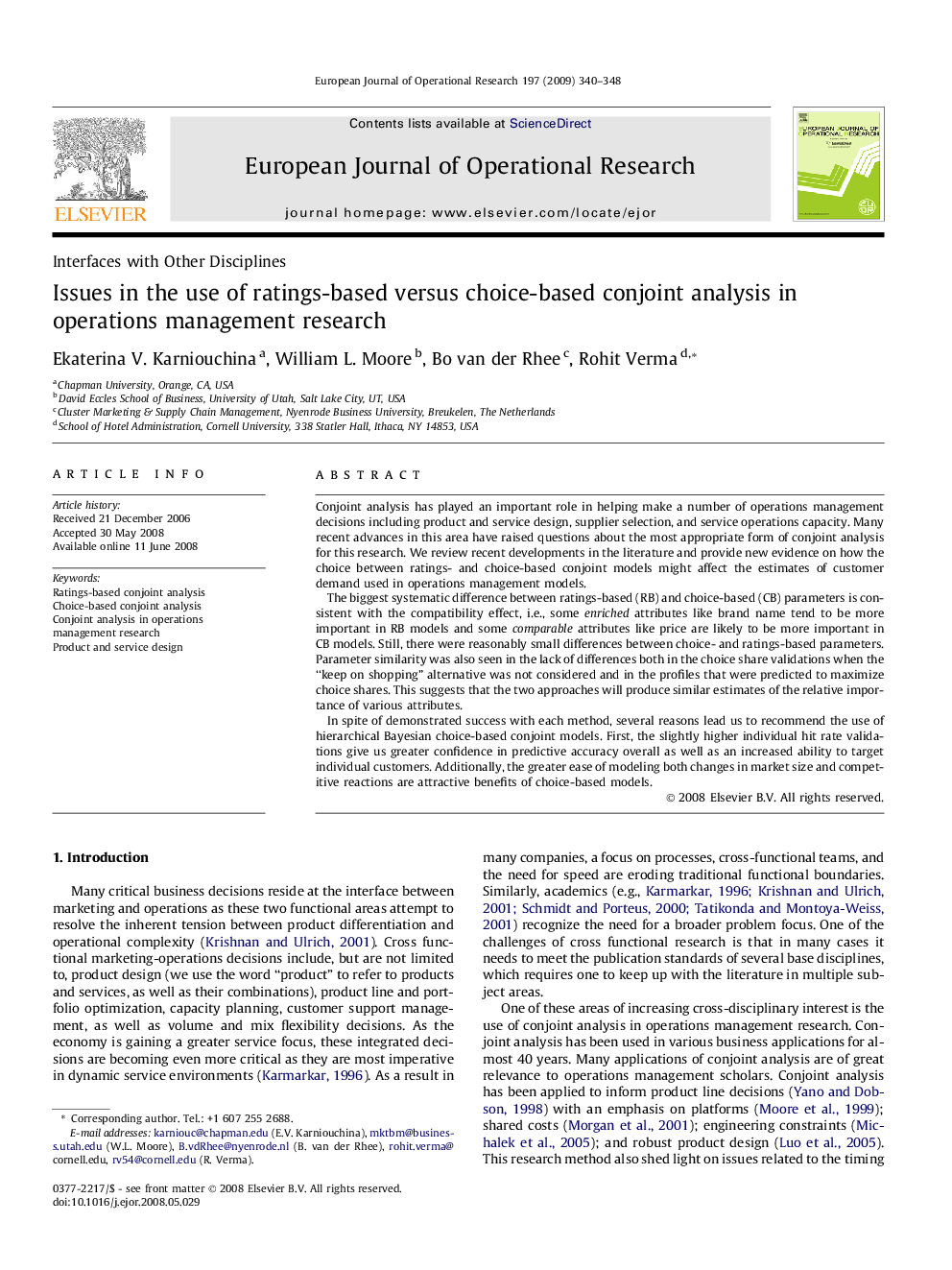| Article ID | Journal | Published Year | Pages | File Type |
|---|---|---|---|---|
| 482733 | European Journal of Operational Research | 2009 | 9 Pages |
Conjoint analysis has played an important role in helping make a number of operations management decisions including product and service design, supplier selection, and service operations capacity. Many recent advances in this area have raised questions about the most appropriate form of conjoint analysis for this research. We review recent developments in the literature and provide new evidence on how the choice between ratings- and choice-based conjoint models might affect the estimates of customer demand used in operations management models.The biggest systematic difference between ratings-based (RB) and choice-based (CB) parameters is consistent with the compatibility effect, i.e., some enriched attributes like brand name tend to be more important in RB models and some comparable attributes like price are likely to be more important in CB models. Still, there were reasonably small differences between choice- and ratings-based parameters. Parameter similarity was also seen in the lack of differences both in the choice share validations when the “keep on shopping” alternative was not considered and in the profiles that were predicted to maximize choice shares. This suggests that the two approaches will produce similar estimates of the relative importance of various attributes.In spite of demonstrated success with each method, several reasons lead us to recommend the use of hierarchical Bayesian choice-based conjoint models. First, the slightly higher individual hit rate validations give us greater confidence in predictive accuracy overall as well as an increased ability to target individual customers. Additionally, the greater ease of modeling both changes in market size and competitive reactions are attractive benefits of choice-based models.
